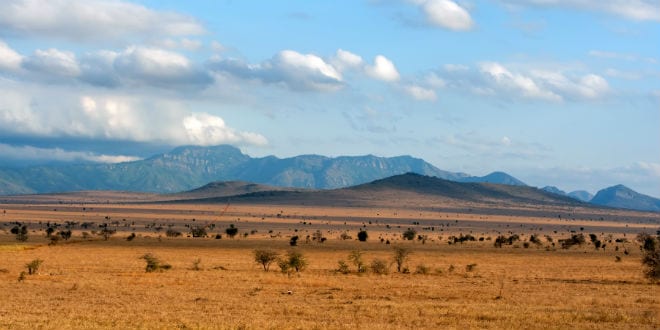The ancient Israelites were a pastoral people, and there were many shepherds among them. Grazing sheep, goats and other domestic animals was the profession of many biblical figures, including the patriarchs Abraham and Jacob, the Twelve Tribes, Moses, David and the prophet Amos. Metaphorically, the term “shepherd” is also used many times in the Bible to denote God.
A shepherd’s main responsibility is to keep the flock safe and flourishing as well as keep a watchful eye out for poisonous plants.
As nomadic herders took their flocks from place to place for over 3,000 years, wherever grasses were available, it has long been thought that human encroachment endangered the wild and naturally pristine ecological system.
But in fact, they were doing nature a favor. An international team of researchers – including at the University of Haifa and the University of Washington in St. Louis – have just published a study in the prestigious journal Nature showing that shepherds and their flocks actually improved the environment.
Some of the African savanna’s most fertile and biologically diverse wildlife hotspots owe their vitality to heaps of dung deposited there over thousands of years by the livestock of wandering herders, they discovered. The animals’ dung contributed to the enrichment of the land and the creation of green and rich surfaces in high nutrient grass.
Prof. Ruth Shahack-Gross of the University of Haifa’s department of maritime civilizations, who has researched settlement periods in the Negev highlands and in Africa’s savannahs (grassy plains), explained: “This is a dramatic paradigm shift. To date, the perception has been that shepherds’ activities in the savannah have been negative and damaging to the ecosystem. But here we find that it is precisely this human activity over thousands of years, that contributed to creating ‘green islands’ that enriched and diversified African savannah landscapes.”
Thus, over the millennia, the cultural practices of migrant herders had the unintended consequence of creating stable fertile environmental niches for an array of wildlife, the study contends.
Grasslands are one of the world’s most extensive terrestrial biomes and are central to the survival of herders, their livestock and diverse communities of large wild mammals. In Africa, tropical soils are limited by the lack of nutrients, but there are productive, grassy patches in wooded grassland savannah ecosystems that grow on fertile soils created by geological factors, megafauna (land animals often larger than modern counterparts and considered archetypical of the last Ice Age), fire and termites.
Based on satellite imaging and detailed analyses of soil nutrients, isotopes and spatial characteristics at ancient Neolithic herder sites in East Africa, the study offers a surprisingly simple explanation for how oval-shaped wildlife hotspots measuring about 100 meters in diameter evolved in a region where grasslands are naturally low in soil nutrients.
Shepherding created soil-fertility “hotspots” by penning their herds at night, which concentrates excrement – and thus nutrients – from grazing of the surrounding savannah. These hotspots were found to produce high-quality forage, attract wildlife and increase heterogeneity in the African savannah. Archaeological research suggests this effect extends back at least 1,000 and possibly as long ago as 3,000 years, but little has been known about nutrient persistence at millennial scales.
The international researchers used chemical, isotopic and sedimentary analyses to disclose nutrients in degraded dung deposits. The study thus shows the long-term legacy of ancient herders.
Prof. Fiona Marshall of the University of Washington initiated the study to delve deeper into these “green islands” in Kenya. She led her international team in conducting archaeological excavations in the southern part of the country that ranged in age from 1,550 to 3,700 years old. They found that the sites still contain nutrient-rich sediments resulting from livestock dung deposited there. They also identified stone vessels, ceramics and the remains of cattle and sheep bones.
To understand the nature of the human activity in these sites, Shahak-Gross developed an innovative method that allows microscopic and chemical methods to determine whether there were animal droppings in the ancient layers.
The researchers suggest that shepherds thousands of years ago began to gather their herds at random points. The animals’ dung, rich in phosphorus and nitrogen, fertilized the soil and made it fruitful. After the abandonment of the settlements, the area became a “green island” with very nourishing weeds that attracted both wild animals and shepherd animals.
“In the study, we show that this positive feedback that shaped the landscape of the savannah as we know it today is at least 3,000 years old. This means that human activity, at least with respect to the areas we studied, has a positive and constructive influence.”



